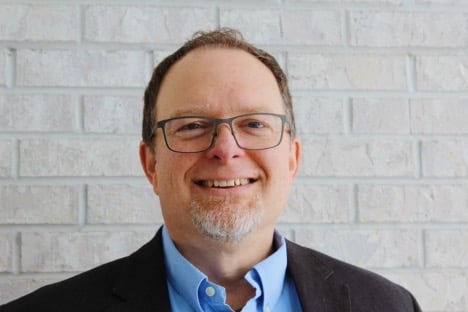Avoiding 2 Costly Leadership Mistakes
- Dr. Jeff Doolittle

- Sep 21, 2020
- 4 min read
Updated: Apr 17, 2021

While there is no single definition of leadership, every organization, and senior leader is looking for ways to increase revenue and avoid costly mistakes to stay competitive. There are two very costly mistakes that leaders frequently commit. Unfortunately, it is the unintended consequences of these mistakes that are so costly. What makes these mistakes so challenging is that they are rooted in the leader's culture. These cultural "blind-spots" influence leaders to feel that they are forced to make unavoidable choices between opposite ends on a continuum. One mistake is the view of having to choose between leading and serving, and the other is the view of having to choose between rules and exceptions. When leaders decide between leading and serving, it is a failure to recognize that the leader becomes stronger when empowering and providing space for others to grow. The mistake of choosing between rules and exceptions is a failure to realize that good rules allow for exceptions, and both work together toward the organization's continuous improvement. Solving for these dilemmas requires the leader to make a fundamental shift in thinking.

What is at risk?
One-dimensional and linear thinking within organizations increases costs. Most leaders recognize and will openly espouse that employees are the organization's greatest assets. However, these same leaders also know that employees are a significant hard cost to the business. Labor accounts for up to 50% of budgets within some retail organizations. Failing to empower and grow employees and failing to improve an organization continuously is proven to result in the lack of employee loyalty, increased turnover, increased absenteeism, and ultimately an organization becoming obsolete. One IBM study found that employees were 12 times more likely to leave a company when they feel they cannot grow their careers.
"If you believe that training is expensive, it is because you do not know what ignorance costs." (Leboeuf, 1985)
Turnover costs for hourly employees are, on average, $1500 and up to two times of annual salary for senior-level employees. Absenteeism-related direct costs, such as paid days off, accounted for 8.1% of payroll costs in 2013 (SHRM), not including indirect costs associated with unpaid days off, such as the Family Medical Leave Act.
Then there are the unintended opportunity costs when leaders inappropriately choose to use power in relationships to solve for these perceived opposing points of view. Inappropriately using power in the leader-follower relationship decreases intrinsic motivation and discretionary effort. Discretionary effort is the level of performance employees could give if they wanted to above and beyond the formal job requirements. Consider two employees are walking down a hall, both seeing a piece of paper on the floor. Only one employee stops to pick it up even though it is neither employees' job responsibility. Intrinsic motivation and discretionary effort involve unlocking the full human potential of an organization's employees. Cyclical and holistic thinking increases intrinsic motivation and discretionary effort.
Case Study: A leader in an international company responsible for a corporate and companywide functional department faced a decision involving selecting a new information management system that would require organization-wide alignment of process. The influences of the different cultures, historical company decisions, regulations, and the use of a standard system amplified the rules versus exceptions dilemma. Unfortunately, the lack of alignment created a conflict that was eventually resolved by a costly mistake of using power (linear and one-dimensional thinking rather than cyclical and holistic thinking). The decision, while resolving the system issue, furthered the competition between parts of the same organization. Also, it contributed to feelings of unfairness and inequality and not being valued because it was turned into a win or lose situation.
What can leaders do?
Adopting and applying a servant leadership approach facilitates the necessary shift in thinking to solve common organizational dilemmas. Research has identified seven everyday leadership dilemmas that are amplified in a culturally diverse workforce: (1) leading-serving, (2) rules-expectations, (3) parts-the whole, (4) control-passion, (5) specific-diffuse, (6) short term-long term, and (7) push-pull. Table 1 reflects the foundational thinking shifts leaders make when adopting a servant leadership approach.

Servant leadership involves: (1) listening to self and others, (2) empathy, (3) healing self and others, (4) awareness, (5) persuasion, (6) conceptual thinking, (7) foresight, (8) stewardship of other’s needs, (9) commitment to people development, and (10) building community. Servant leadership is proven to minimize the leader’s "cultural blind-spots" by shifting the thinking and focus on serving others, listening to employee’s needs, and developing strategies that consider cultural differences. It is through serving, the servant leader obtains a greater authority with followers.
To learn more about servant leadership and three other emerging 21st-century leadership styles check out 4 Emerging Leadership Styles and Why You Should Care.
References:
Greenleaf, R. K., & Spears, L. C. (2002). Servant leadership: A journey into the nature of legitimate power and greatness (25th-anniversary ed.). Paulist Press.
Spears, L. C. (1998). Servant-leadership. Executive Excellence, 15(7), 11.
Trompenaars, A., & Voerman, E. (2010). Servant-leadership across cultures: Harnessing the strength of the world's most powerful management philosophy. McGraw-Hill.
Are you interested in better understanding your own leadership style?
Contact Organizational Talent Consulting to learn more about a leadership style inventory assessment you can use to measure your preferred leadership style and receive individualized executive coaching.

Register for an upcoming FREE webinar on servant leadership. Here is what you can expect:
• What is servant leadership?
• Contemporary Leadership Theory Comparisons
• Servant Leadership Value
• The 5 Best Resources on Servant Leadership
Use this site to find registration links for upcoming leadership development webinars










Comments